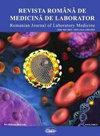Management of a case of Castleman’s disease coexisting with or occurring after transplanted Hodgkin’s lymphoma
IF 0.5
4区 医学
Q4 MEDICINE, RESEARCH & EXPERIMENTAL
引用次数: 0
Abstract
Abstract Castleman’s disease is a benign lymphoproliferative disorder. The coexistence of Hodgkin’s lymphoma and multicentric Castle-man’s disease is a rare phenomenon. We discuss a case of a 48-year-old female patient who had been in the records of the Colentina Hematology Clinic since 2019, with the diagnosis of classic Hodgkin’s Lymphoma, nodular sclerosis type I BNLI, stage IIXB. For this, she underwent 3 courses of ABVD and 2 courses of BEACOPP, without showing complete remission on PET/CT evaluation at the end of treatment. After that, we initiated rescue therapy and performed 4 IGEV courses, followed by autologous stem cell transplantation. For maintenance treatment, we opted for Brentuximab, but it was discontinued after the first administration due to the appearance of adverse reactions. Subsequently, we decided to perform radiotherapy with 20 fractions cumulating a total dose of 36 Gy. Shortly after the radiotherapy, symptoms reappeared which were suspected to be in the context of a relapse of the disease. For confirmatory diagnosis, we performed a new PET-CT which highlighted metabolically active ganglion images. Further, were carried out lymph node biopsy for histopathological and immunohistochemical examinations were carried out. The underlying disease was diagnosed as plasmacytic subtype, HHV8 negative, multicentric Castleman’s disease. For treatment, we relied on administrations of Siltuximab treatment therapy that showed complete remission. Castleman’s disease presents a unique diagnostic challenge, but a confirmatory diagnosis can be based on a biopsy examination, advisable after each relapse.一例Castleman病与移植霍奇金淋巴瘤共存或发生后的治疗
Castleman病是一种良性淋巴细胞增生性疾病。霍奇金淋巴瘤和多中心卡索-曼氏病共存是一种罕见的现象。我们讨论一例48岁的女性患者,自2019年以来一直在Colentina血液学诊所记录,诊断为经典霍奇金淋巴瘤,结节性硬化I型BNLI,分期IIXB。为此,她接受了3个疗程的ABVD和2个疗程的BEACOPP,治疗结束时PET/CT评估未显示完全缓解。之后,我们开始了救援治疗,进行了4个IGEV疗程,随后进行了自体干细胞移植。对于维持治疗,我们选择Brentuximab,但由于出现不良反应,在第一次给药后停药。随后,我们决定进行20次放射治疗,累计总剂量为36 Gy。放射治疗后不久,症状再次出现,怀疑是在疾病复发的背景下。为了确认诊断,我们进行了新的PET-CT,突出了代谢活跃的神经节图像。进一步,进行淋巴结活检进行组织病理学和免疫组织化学检查。基础疾病诊断为浆细胞性亚型,HHV8阴性,多中心Castleman病。对于治疗,我们依赖于西妥昔单抗治疗,显示完全缓解。Castleman病呈现出独特的诊断挑战,但可基于活检检查进行确诊,建议在每次复发后进行。
本文章由计算机程序翻译,如有差异,请以英文原文为准。
求助全文
约1分钟内获得全文
求助全文
来源期刊

Revista Romana De Medicina De Laborator
MEDICINE, RESEARCH & EXPERIMENTAL-
CiteScore
0.31
自引率
20.00%
发文量
43
审稿时长
>12 weeks
期刊介绍:
The aim of the journal is to publish new information that would lead to a better understanding of biological mechanisms of production of human diseases, their prevention and diagnosis as early as possible and to monitor therapy and the development of the health of patients
 求助内容:
求助内容: 应助结果提醒方式:
应助结果提醒方式:


